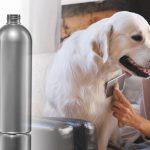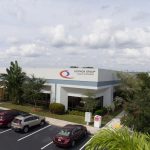Polyethylene Terephthalate (PET) bottles are widely recognized for their cost-effectiveness in various industries, including beverages, personal care, pharmaceuticals, and household products. This cost-effectiveness encompasses production, logistics, and end-use applications, offering significant financial benefits over alternative packaging materials such as glass or metal. Here’s a detailed examination of why PET bottles are a cost-effective choice:
1. Lower Production Costs
Material Costs:
- PET is derived from petrochemicals, specifically ethylene glycol and terephthalic acid, which are relatively inexpensive compared to the raw materials required for glass or metal packaging.
- The cost of raw PET resin is generally lower than that of aluminum or glass, leading to significant savings in the material expenses for bottle manufacturing.
Manufacturing Efficiency:
- PET bottles can be manufactured through highly efficient processes like injection molding and blow molding. These methods are faster and less energy-intensive compared to the production processes for glass or metal containers.
- High-speed production lines for PET bottles contribute to economies of scale, reducing the unit cost of each bottle as production volumes increase.
Less Energy Consumption:
- Producing PET bottles requires less energy than producing glass or aluminum containers. For example, melting and molding glass involves higher temperatures and longer cooling times, leading to greater energy consumption and higher costs.
- PET’s lower melting point compared to glass means less energy is required to form bottles, translating into cost savings in manufacturing.
Automation:
- The production of PET bottles can be highly automated, reducing the need for manual labor. This decreases labor costs and minimizes human error, further enhancing cost-efficiency.
2. Reduced Transportation and Storage Costs
Lightweight Nature:
- PET bottles are significantly lighter than glass or metal containers, which reduces shipping costs. Lower weight means less fuel consumption during transportation, leading to cost savings in logistics.
- Lighter packaging also reduces wear and tear on transportation equipment and infrastructure, contributing to lower maintenance costs.
Efficient Packing:
- The uniform shape and stackability of PET bottles allow for more efficient packing and better use of storage space. This results in fewer shipments and reduced warehousing costs.
- Higher packing density translates into fewer trips needed to transport the same volume of products, further cutting down on logistics expenses.
Breakage Reduction:
- PET bottles are more impact-resistant than glass, reducing the risk of breakage during transportation and handling. Lower breakage rates mean fewer product losses and reduced costs associated with returns and replacements.
3. Versatility and Flexibility in Design
Customization:
- PET can be easily molded into a variety of shapes and sizes, allowing manufacturers to design bottles that meet specific requirements without significant additional costs.
- This flexibility reduces the need for multiple packaging solutions, enabling economies of scale in production and inventory management.
Integration with Existing Systems:
- PET bottles are compatible with a wide range of closures, labels, and dispensing mechanisms, allowing seamless integration with existing filling and packaging lines. This compatibility reduces the need for expensive equipment modifications.
The Cost-Effectiveness of PET Bottles: A Comprehensive Analysis. Part 2




